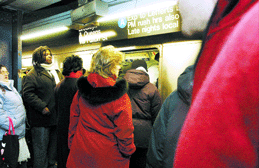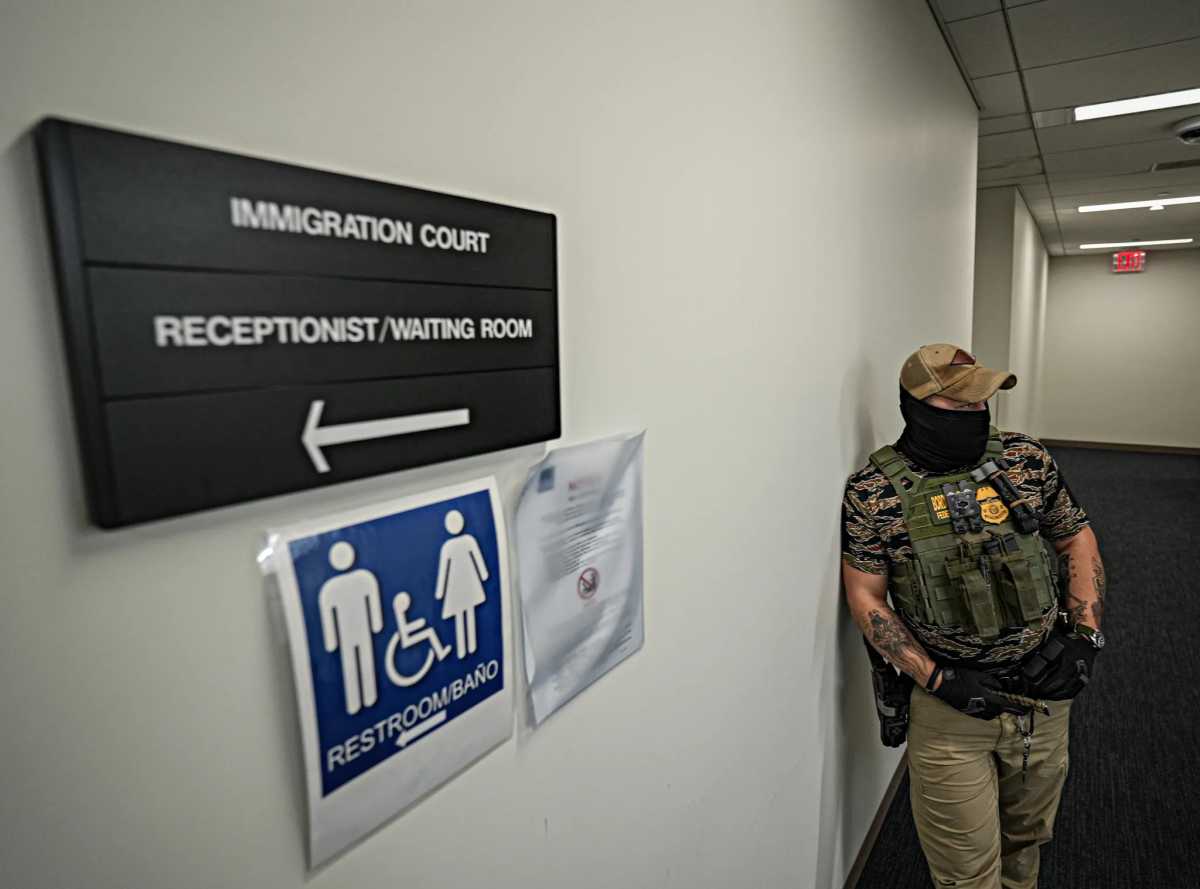By DIVYA WATAL
Many of the thousands of people who commute everyday to or through Lower Manhattan are irate about disrupted subway services, maddeningly long waiting times at stations, and the perceived inefficiency and negligence of the Metropolitan Transit Authority after Sunday’s fire near the Chambers St. A and C line subway station.
The effects are being felt throughout the system, but in some ways they are more severe in Lower Manhattan because trains are moving more slowly as they pass through the damaged area.
The blaze, whose cause is unknown, spread through the tunnel near the station and damaged the signal relay room. As a result, the M.T.A. halted the C train service indefinitely and decreased the frequency of A service.
“I had to wait 20 minutes for the A train this morning, and it was overcrowded – more so than usual,” said Christine Wilson, who commutes everyday from Queens to Downtown for work. She was irritated by the delay and confused about why there were so few trains running, she said.
A service alert posted on the M.T.A. Web site on Tuesday morning explained that the A was “running with limited capacity and extended headways system wide,” adding that there would be “limited A service between Fulton St. – Broadway Nassau and Canal Street.
“The A train will go in slow speed mode in the area of the fire,” said Deirdre Parker, a spokesperson for New York City Transit, a division of the M.T.A. She said Lower Manhattan is not suffering more than any other areas on the A and C lines, even though she acknowledged trains are running slower Downtown.
The E train service, which also runs through Lower Manhattan, ends at the World Trade Center site, whose station is connected to the Chambers St. stop. The fire has not affected the line’s frequency, and the M.T.A. does not plan on running more E trains to compensate for the crippled A and C train services.
“The 15-20 minutes extra wait would be okay if I did nothing,” said Manny Delgado, who comes into Downtown everyday from New Jersey, “but for people who have to rush to work, it has a major effect.”
The M.T.A., which came under attack for initially saying restoration of the lines would take three to five years, revised its estimate one day later to six to nine months. At an M.T.A. board meeting Thursday, Larry Reuters, N.Y.C.T.A. president, clarified his previous statements claiming that he had been “misquoted.” It would take three to five years to repair and rebuild the signal system, he said, which is the normal time frame for such extensive damages, but the train services would be restored within the next few months.
The M.T.A. will implement its Eighth Ave. subway corridor (which also runs under Church St.) repair plan in three phases, according to a Jan. 25 press release.
Phase I, which involves installing automatic block signal protection between Chambers St. and Canal St. – i.e., eliminating manually operated signal systems – should restore 60 percent of original A line capacity. Phase II, which will further improve signaling, should restore the A line to 80 percent of its original capacity. Phase III, in which timers regulating train speed will be installed – to safely increase volume of train traffic – should culminate in full capacity A and C train services.
However, restoring the A and C lines to full capacity does not mean trains will run efficiently, because the signal system could cause unforeseen delays. The trains may be crowded; the trains may be slower; but at least we will be able to put everyone on a train, Reuters said.
M.T.A. officials also discussed modernizing signal relay rooms at their board meeting. The M.T.A. will install a technologically superior signal relay room at the Chambers St. station, among other stations. At present, 158 of its 200 signal relay rooms in New York City have been modernized in an ongoing effort to update wiring systems. The modernized relay rooms have intrusion detectors, fire retardation installations, and other security features.
The M.T.A.’s newest timetable, which many consider a defensive reaction to fierce criticism, did little to assuage some Downtown commuters.
“Frankly, I feel uneasy [traveling in the subway]. This is disturbing,” said Carlos Cabanilla, a Jersey City resident who travels through the Fulton St. – Broadway Nassau subway station everyday. “How easy would it be for someone to put a bomb in a subway,” he asked, adding that transit officials thought it was a homeless person with “no tactics” who had caused so much disorder. “How easy would it be for someone with brains [to do serious damage]?”
Police do not know if a homeless person in a subway tunnel started the fire, as was originally speculated.
“They should have better security for important equipment,” said another angry commuter, Serena Wen, a Lower East Side resident. The security of subway stations, she said, was more important to her than train delays.
Close to a dozen commuters interviewed at the Chambers St. and Fulton St. – Broadway Nassau stations said that their ride into or around Lower Manhattan had become more inconvenient and that the M.T.A. should not take as long as anticipated to fix the problem.
WWW Downtown Express



























